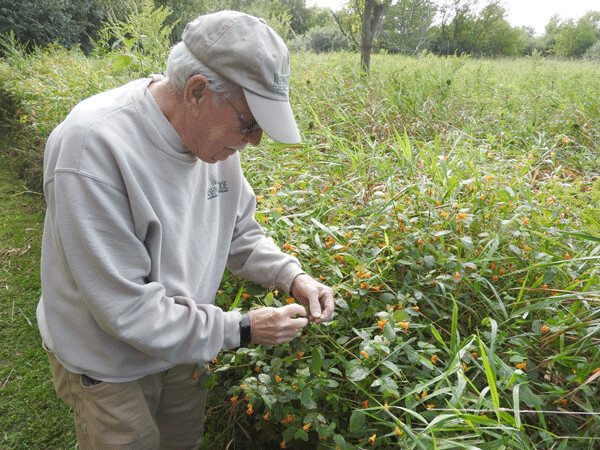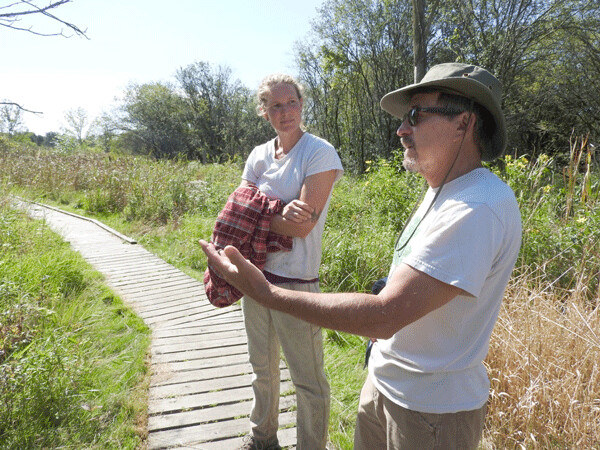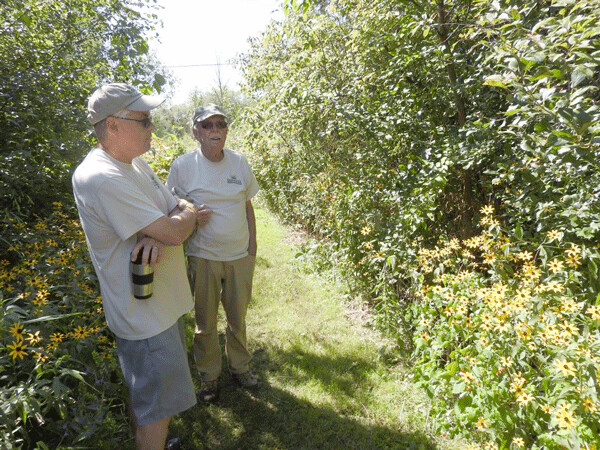Each One Teach One

By the time I sat down in the shade of a small pavilion at the entrance to Kishwauketoe Nature Conservancy (KNC) near the shore of Geneva Lake in far southern Wisconsin, I was feeling quite at home. After spending two full days in this small, lake-centered town of long-time residents, transplants, and summer people, I recognized the familiar weave of a close-knit community populated by dedicated volunteers.
Several of the KNC’s naturalists, board members, and volunteers, as well as the local librarians, joined me in the shade, while bright sun began to warm up the native gardens nearby. During my visit, I’d listened to board chair Harold Friestad and board member Jim Killian talk about the history of this land’s acquisition, preservation, and restoration. We’d walked many of the preserve’s four miles of trails through prairie, wetland, and forest as they recounted their massive buckthorn removal efforts—and the incredible return of native species.



We’d also walked 22 miles around the circumference of Geneva Lake, and witnessed the shoulder-to-shoulder development that would surely have claimed this 231 acre parcel, had Harold not orchestrated its purchase by the Village of Williams Bay in 1989. The board dedicated it “To the Children of Tomorrow,” through a conservation easement held by The Geneva Lake Conservancy.
My presence at the pavilion was due to an invitation from Jim to lead the KNC community in a workshop about “Finding the Stories in Nature.” This preserve is just full of stories—human stories, bug stories, and love stories between people and the land. How could we craft those stories into powerful tools for education, community building, and fundraising?
Danielle Simons, the KNC’s educator, led us down a trail toward the lakefront. Butterflies, insect galls, and the ready-to-burst seed pods of jewelweed flowers distracted us several times before we reached the wetland, beaver lodge, and boardwalk. While folks relaxed on a long bench, I facilitated a Professor Hike.
I first used Professor Hikes, also known as an “each one teach one” when I taught fifth graders in the redwoods of California. One by one I planted each kid at an impromptu station along the trail, and as the next student hiked toward me, they stopped to learn from each of the “professors.” Back then, Professor Banana Slug was the fan favorite.
Joy Schnupp, the local library director, was my first professor at KNC. As we strolled along the boardwalk, she requested to be Professor Cattail. Once we’d practiced her story, I beckoned the group to send me the next student. Harold strolled up, listened to Joy, and then walked on with me to find his teaching station. I knew I wouldn’t have to help Harold find a story. He knows the history of this place better than anyone.
“The railroad used to end right over there,” he gestured to the beach. “Once that went away, we built the boardwalk. People loved that, but they complained that it didn’t go anywhere. So we cleared a path through the buckthorn ahead of the construction crew, and connected the boardwalk all the way to the upland. People still wanted more places to explore, and we ended up with over four miles of trails in the preserve. But this boardwalk started it all.”
Jim had been looking for wild plums on the way in, and we finally found the plum tree right where his professor station needed to be. The tree had gone from heavily laden with fruit to almost bare in less than a week, which is why he’d originally missed it. That signal of its value as a wildlife tree was in stark contrast to the berry-laden buckthorn nearby. Those non-native, nutrient-poor fruits are a resource of last-resort.
Several professors in, I started noticing longer and longer wait times until a new student would walk down the trail toward me. Looking back, I saw people deeply engaged in conversations—adding information to the topic, reflecting on previous stops, and getting to know each other better.
Natasha’s eyes shone as we stopped at a small cluster of trees to establish her professor story. A native of Williams Bay who’s just started her education at UW-Stevens Point, Natasha was lamenting the fact that, despite this local gem, her environmental science class at the local high school had only been offered online. She had big ideas about expanding the KNC’s educational efforts from the Kish Kids day camp to higher level coursework. And she had a passion for permaculture, ignited by a recent trip to Africa. We incorporated both of those thoughts into her Professor Permaculture station.
Soon the line curled back on itself, and everyone had both taught and learned from everyone else. Conversations bubbled merrily on our walk back to the pavilion, and Harold told me how valuable the one-on-one time had been. He’d already offered Natasha a paid internship over winter break, so she could initiate partnerships with the local high school. Joy, the librarian, had scheduled Natasha to give a talk on permaculture at the community gardens.
We did a little wrap-up in the pavilion, but I didn’t want people to feel like we’d come to some sort of conclusion. The excitement fizzing, the stories brewing, the relationships strengthening: these were just the beginning. Finding the stories in nature had unearthed a whole lot more.
Emily’s second book, Natural Connections: Dreaming of an Elfin Skimmer, is now available to purchase at www.cablemuseum.org/books and at your local independent bookstore, too.
For more than 50 years, the Cable Natural History Museum has served to connect you to the Northwoods. Come visit us in Cable, WI! Our new Curiosity Center kids’ exhibit and Pollinator Power annual exhibit are now open! Call us at 715-798-3890 or email emily@cablemuseum.org.
